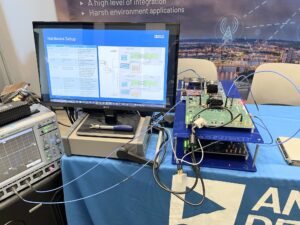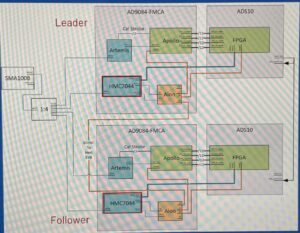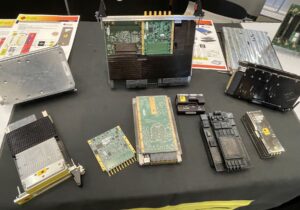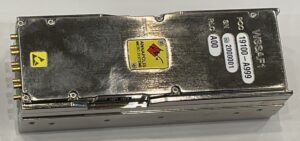The IEEE Phased Array conference took place in Boston from October 15-17, 2024. This specialized event featured a small exhibit floor showcasing the latest innovations in the field.
Boston — The 2024 IEEE International Symposium on Phased Array Systems & Technology made its debut in the city after being held in a suburban Boston hotel for several years. Known as “Array,” this conference spanned three days of technical sessions and a compact tabletop trade show. Despite its niche focus, Array 2024 offered a wide range of technical sessions, plenary talks, and poster presentations covering antennas, signal processing, and systems for 5G, satellite, and Radar. The topics included:
- Beamforming in a Multifunctional Fully Digital Phased Array
- An Ultra-Wideband Fully-Planar Inverted-L Element (FILE) Array with Dual-Polarization and Optimal Sampling
- A Novel Wideband Circularly Polarized Unit-cell for TransmitArrays in X-band and Ka-band
- A 23-46 GHz Dual-Polarized 4×2 Planar Phased Array for Portable 5G FR-2 Applications
- Analysis of Low-Frequency Radio Array Mapping of D-Region Electron Densities and HF Absorption
- Enhancing 5G Millimeter-Wave Multiband Capabilities with Optimized Microstrip 4×4 Array Antenna
- 80GHz Automotive Radar Antenna Module Fabricated Using Electrochemical Additive Manufacturing
Aside from the sessions, Array 2024 also featured a tabletop exhibit hall.
Analog Devices
Timing is crucial in network operations to ensure data reaches its destination promptly. In phased-array systems, precise timing is essential for accurate beam positioning. Analog Devices, a manufacturer of ICs for phased arrays, demonstrated the synchronization of two Apollo MxFE Quad, 16-bit, 28 GSa/sec RF DAC and Quad, 12-bit, 20 GSa/sec RF ADC SoC for software-defined radio applications. The demo showcased how to construct a phased array system using eight DACs and ADCs for applications requiring more than 2×2 or 4×4 arrays.
 |
 |
Annapolis Micro Systems
Phased arrays demand substantial computational power to adjust beam characteristics as targets move relative to the base station or radar antenna. Annapolis Micro Systems offers modules that can be integrated into systems for this purpose. The image on the right showcases the company’s WILDSTAR SAF1 Small Form Factor module, which features a quad-core A53 Arm processor and an Intel AgileX AGRW014 FPGA, along with four ADC and four DAC channels.
 |
 |



